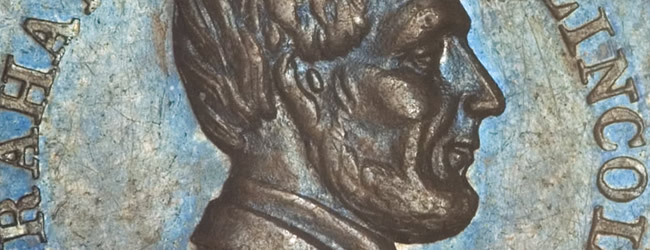
Perhaps it is hard to imagine a time when pocket change was hard to find. Most of us tend to have an accumulation of change jingling around in our pockets, purses, or change jars. During several distinct periods in American history, however, circulating coinage was scarce enough that there was a true shortage.
Although it is typically considered the responsibility of the federal government to provide coinage as needed, it was often true during the 1800s that there were not sufficient funds in circulation to allow for healthy commerce.
In fact, up until private minting was made illegal in 1864 by federal law, private minting companies and local businesses often made their own coins and tokens in order to make commerce possible when small denomination coins for making change were simply not circulating in sufficient quantities.
Such privately minted coins took several forms over the years. To begin, one fascinating example of such privately produced coinage is Civil War tokens. Normally the size and approximate composition of an Indian Cent, Civil War tokens were produced to both fill the void of circulating small coins.
They served the function of making change as well as to advertise both patriotic causes relating to the war and local businesses. Most were produced in 1863 as substitutes for the regularly issued cents that were being hoarded during the war.
While they filled the practical function of circulating as regular U.S. cents, they also are highly collectible today. The variety of designs and topics available makes these pieces a striking addition to a rare coin collection or grouping of historical items relating to the Civil War.
Similarly, Hard Times Tokens were another group of privately minted coins that circulated during a selective time period of American history but were not produced by the U.S. Mint. These tokens are so named because they circulated during the “Hard Times” that began in May of 1837.
At this time, many banks became so short on funds that they suspended the exchange of coins for paper currency. In response to these economic trials and the lack of circulating small coinage, private minters began to produce copper coins the size of a large cent. They featured either political themes or advertisements for local businesses. In this regard, they are related to the Civil War tokens that were produced years later.
Private or territorial gold, on the other hand, is the general term that refers to privately minted gold coins produced prior to 1864 by groups or individuals other than the Federal government and outside the U.S. Mint. Such coins were often produced in a region where gold was being mined, creating an economic boom for which the local economy was typically unprepared.
When gold was discovered in California in the 1840s, for example, many people went West to seek their fortunes, causing the population of so called “boom towns” to increase dramatically. Without enough coins in circulation in the sparsely populated West, territorial gold producers turned to minting their own coins.
These include gold smelting and assaying groups such as Moffat & Company, Dubosq & Company, and Wass, Molitor, & Company. Likewise, when gold had been discovered years earlier in the South, the Bechtler family of metallurgists in North Carolina and jeweler Templeton Reid in Georgia struck their own private gold coinage.
Today, both American tokens and territorial gold coins produced prior to 1864 are widely collected. They have broad appeal not only to coin collectors but also to history enthusiasts interested in the Civil War, the gold rush of 1849, and other historical events connected to their production and designs. All in all, with the added allure of being produced outside the U.S. Mint but collected in tandem with regularly issued American coinage, Civil War tokens, Hard Times tokens, and territorial gold coins present an exciting area of study for collectors.
Visit our U.S. coins department to view upcoming auctions and to browse our auction archives
By Sarah Miller






Leave a Comment